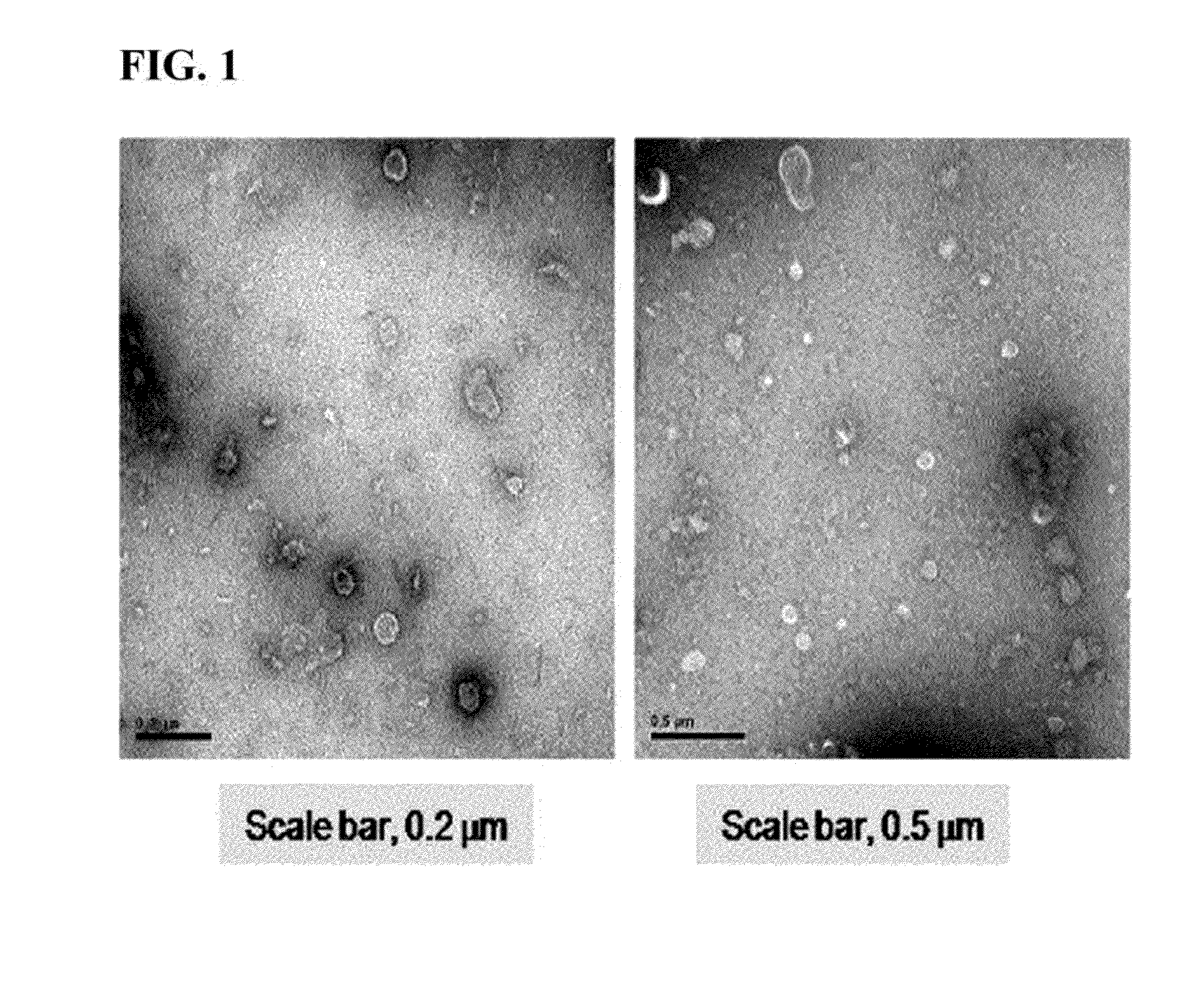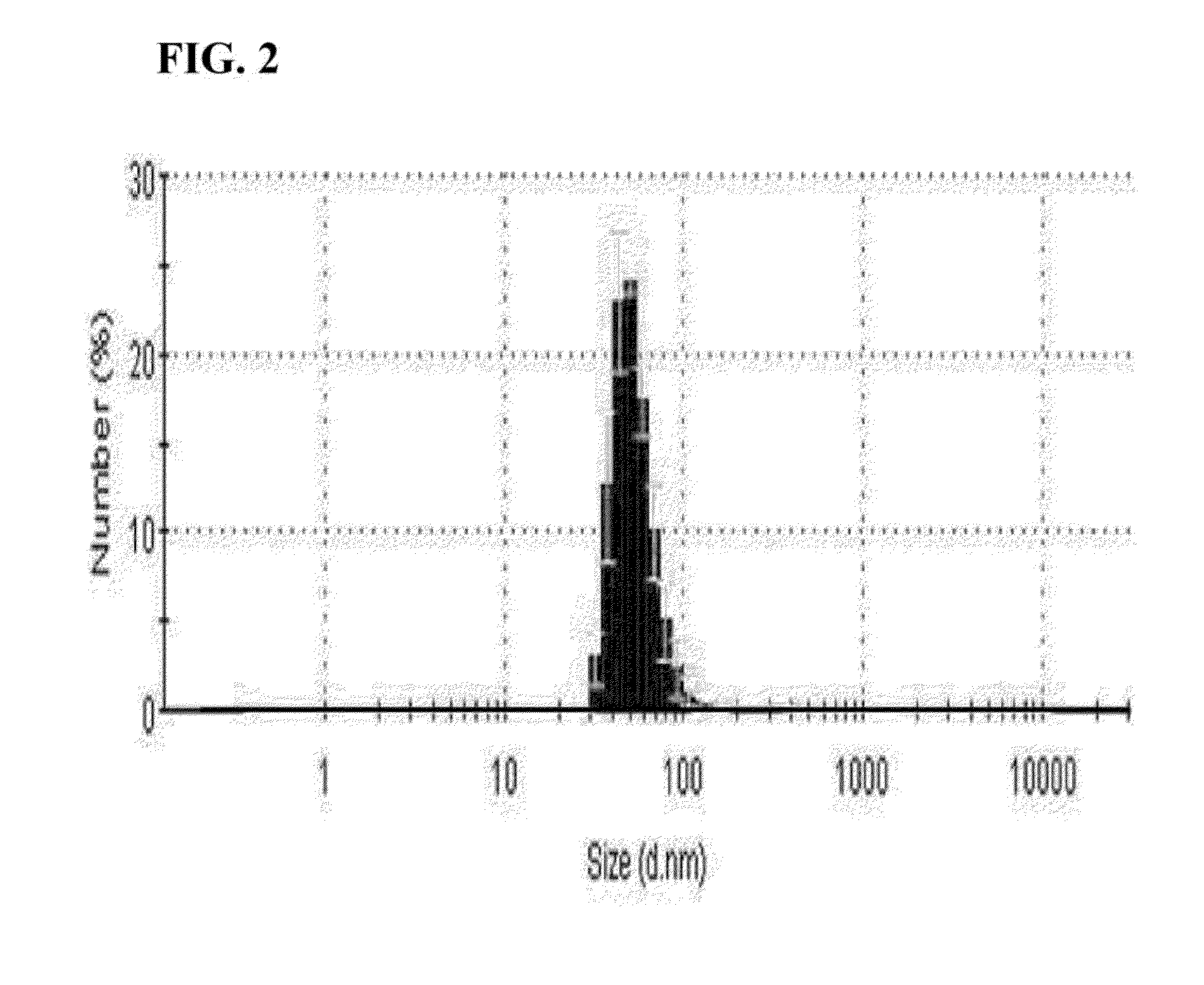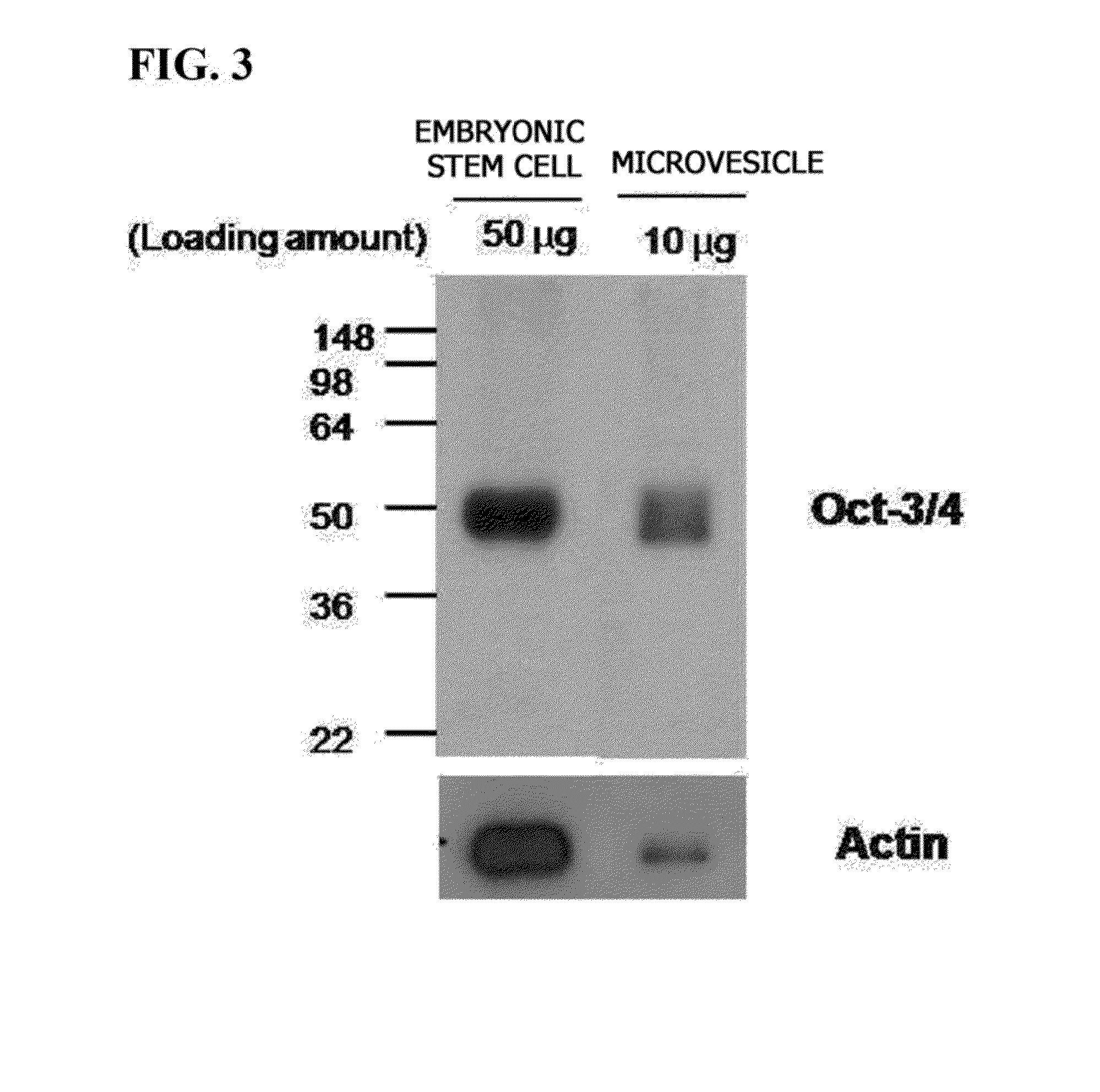Method for preparing induced pluripotent stem cells using microvesicles derived from embryonic stem cells
a technology of embryonic stem cells and microvesicles, which is applied in the field of preparation of induced pluripotent stem cells, can solve the problems of undesired modifications, easy degradation of mrna, and no successful case of dedifferentiation having similar characteristics, and achieves the effects of reducing damage, reducing the number of cells, and effectively protecting the content of the delivery
- Summary
- Abstract
- Description
- Claims
- Application Information
AI Technical Summary
Benefits of technology
Problems solved by technology
Method used
Image
Examples
example 1
Preparation of Embryonic Stem Cell-Derived Microvesicles
[0042]Mouse embryonic stem cells were resuspended in 3 ml of a phosphate buffered saline (PBS) solution at a concentration of 5×106 cells / ml. The resuspension was passed through a membrane filter having a pore size of 10 μm 10 times, and through a membrane filter having a pore size of 5 μm 10 times. 1 ml of 50% OptiPrep™, 1 ml of 5% OptiPrep™, and 3 ml of a cell suspension passed through the membrane filter were each put in a 5 ml ultracentrifuge tube. Afterward, ultracentrifugation was performed at 100,000×g for 2 hours. A microvesicle was obtained from a layer between 50% OptiPrep™ and 5% OptiPrep™.
example 2
Analysis of Characteristics of Embryonic Stem Cell-Derived Microvesicles
[0043]The microvesicles prepared in the embryonic stem cells according to the method described in Example 1 were adsorbed on a glow-discharged carbon-coated copper grid for 3 minutes. The grid was washed with distilled water and stained with 2% uranylacetate for 1 minute, and results observed using a transmission electron microscope, JEM101 (Jeol, Japan), are shown in FIG. 1.
[0044]As shown in the TEM images of FIG. 1, it can be seen that the microvesicle prepared by extrusion from the embryonic stem cells was composed of a lipid bilayer, and usually formed in a sphere having a size of 100 to 200 nm.
[0045]The microvesicle prepared from the embryonic stem cells described in Example 1 was diluted in 1 ml of PBS at a concentration of 5 μg / ml. 1 ml of PBS containing the microvesicles was put into a cuvette and analyzed using a dynamic light scattering particle size analyzer, and results are shown in FIG. 2.
[0046]As s...
example 3
Dedifferentiation of Somatic Cells using Embryonic Stem Cell-Derived Microvesicles
[0051]0.1% gelatin was coated on a 6-well plate and inoculated with 8×104 of NIH3T3 cells, and the cells were incubated for 24 hours. Afterward, each well was washed with PBS, 2 ml of the microvesicles prepared in the embryonic stem cells according to the method described in Example 1 were diluted in a fibroblast medium (DMEM, 10% FBS, 100 U / ml penicillin-streptomycin) at a concentration of 100 μg / ml, and then treated to the incubated NIH3T3 cells. After 48 hours, approximately 2 to 3 colonies per well were identified, and each colony had a size of approximately 10 to 100 μm. The colonies were observed using an electron microscope, and results are shown in FIG. 5.
[0052]As shown in FIG. 5, it is confirmed that the NIH3T3 cells were dedifferentiated using the embryonic stem cell-derived microvesicles, thereby inducing colonies. Each well was washed with PBS, and 400 μl of 0.1× TE (Typsin-EDTA) was added....
PUM
| Property | Measurement | Unit |
|---|---|---|
| size | aaaaa | aaaaa |
| concentration | aaaaa | aaaaa |
| size | aaaaa | aaaaa |
Abstract
Description
Claims
Application Information
 Login to View More
Login to View More - R&D
- Intellectual Property
- Life Sciences
- Materials
- Tech Scout
- Unparalleled Data Quality
- Higher Quality Content
- 60% Fewer Hallucinations
Browse by: Latest US Patents, China's latest patents, Technical Efficacy Thesaurus, Application Domain, Technology Topic, Popular Technical Reports.
© 2025 PatSnap. All rights reserved.Legal|Privacy policy|Modern Slavery Act Transparency Statement|Sitemap|About US| Contact US: help@patsnap.com



